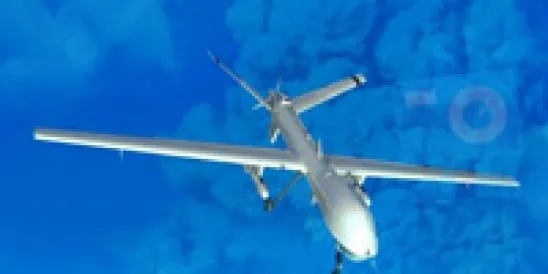With a little over one month to go in the comment period on the FAA’s proposed rules for the Operation and Certification of Small Unmanned Aircraft Systems, and facing the prospect of at least another year before those rules become final, many energy and infrastructure companies are moving forward with their small unmanned aerial vehicle (UAV) plans under the FAA’s existing rules.
As of March 2, 2015, the Federal Aviation Administration had granted 46 petitions to conduct specific small UAV operations for commercial purposes. Section 333 of the FAA Modernization and Reform Act of 2012 authorizes the Secretary of Transportation to grant exemptions from the Federal Aviation Regulations that would otherwise prohibit commercial UAV operations in the National Airspace System. On February 24, 2015, the FAA granted such an exemption to Commonwealth Edison Company thereby permitting the electric utility to operate DJI Innovations S900 UAVs to monitor, inspect, and assess damage to electric transmission and distribution utility systems. The UAV operations approved for Commonwealth Edison are broader than the UAV research, testing, and training flights approved for San Diego Gas and Electric (SDG&E) in 2014.
Similar to other approved Section 333 Exemptions, the FAA imposed 31 conditions and limitations on Commonwealth Edison’s UAV operations including, among other things: only the specified type of UAV may be operated; the UAV must be operated at all times within the visual line of sight of the pilot-in-command who must possess at least a private pilot certificate and a third class airman medical certificate; the company must utilize a visual observer to assist with UAV operations; the operator must inspect the UAV before each flight to ensure it is in a condition for safe flight; the UAV may be operated only during daylight hours and at airspeeds of 50 knots or less; and the company must obtain a Certificate of Waiver or Authorization from the relevant Air Traffic Organization and request a Notice to Airman between 48 and 72 hours before the planned UAV operations. Other energy and infrastructure-related companies that have also been granted similar exemptions include: Chevron USA (monitoring of oil and gas facilities), Total Safety U.S. (flare stack inspections), and BNSF Railway Company (railroad infrastructure and operations).
While the limited number of Section 333 Exemptions granted to date may not be that impressive, what is more telling are the 750-plus other petitions that have been filed and which are awaiting a decision by the FAA. These petitions provide an indication of the broad interest in UAVs among electric utilities, energy companies, and other infrastructure operators. Electric utilities that have filed petitions include Arizona Public Service Company, Xcel Energy, Consumers Energy Company, Southern Company Services, SDG&E, Duke Energy, NextEra Energy, and PPL Electric Utilities. These utilities’ petitions contemplate current or future UAV operations in more than 15 states for inspection of power generation facilities, electric transmission and distribution lines and substations, and for storm damage assessments.
Petitions by other energy companies include Clean Energy Renewables (wind turbine inspections), Ventus Wind LLC (inspection of wind turbines and onshore oil and gas pipelines and facilities), and Midstream Integrity Services (inspection of oil and gas industry vertical structures, pipelines, and rights-of-way). Other companies outside of the electric utility and energy industries have also filed petitions for specified UAV operations, including Dow Chemical Company (aerial inspection and environmental monitoring) and Union Pacific Railroad (railroad incident assessments).
Companies wanting to pursue UAV operations now must comply with the Section 333 Exemption process after which a Certificate of Waiver or Authorization must also be obtained. These processes are documentation intensive and time-consuming, with FAA decisions following approximately four to five months after the initial Petition for Exemption.
UAV technology and capabilities are rapidly maturing and the potential value of UAVs for a wide range of operations in the electric utility, energy, and infrastructure sectors is becoming increasingly apparent. As a result, companies in these sectors are not waiting for the current rulemaking to conclude. Instead, they are moving to develop practical experience with UAV systems as permitted within the present regulatory framework. While some of the current regulations and the conditions and limitations imposed on UAV operations may be burdensome (e.g., requirement that the UAV operator be a licensed pilot), some of these concerns are likely to be alleviated when the new rules take effect. If and when that happens, the experience gained now under the present regulations will position these companies to take full advantage of the capabilities of this new technology.




 />i
/>i

